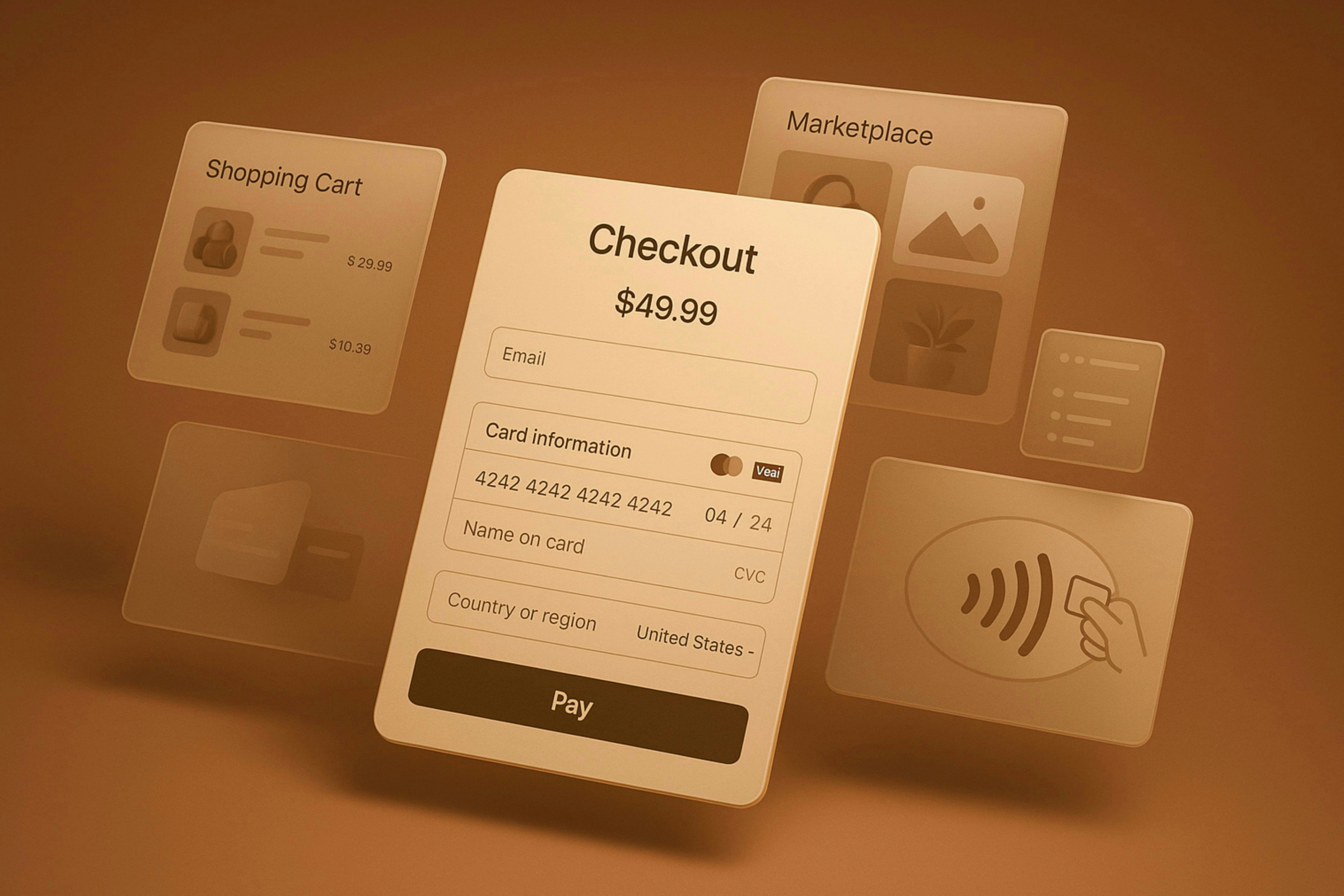Stop Perfecting, Start Selling: The System Every Shopify Store Needs
Most Shopify stores don’t fail because the product is bad. They fail because nothing was validated before launch. No message, no offer, no angle. Just a decent idea wrapped in a nice theme, waiting for traffic that never comes.
This is the invisible trap that catches most beginners. They spend weeks (or months) building what looks like a business: homepage polished, branding on point, product pages filled with details. But beneath the surface, there’s no structure to attract, convert, or retain. No understanding of the problem being solved. No testing process. No system.
What makes a store grow isn’t aesthetic or complexity; it’s repeatability. A way to consistently reach the right audience, offer something they genuinely want, and remove every layer of friction between interest and purchase. This kind of system isn’t obvious at the beginning. But it’s what turns quiet stores into predictable revenue engines.
Start With Pain, Not Product

One of the most common patterns across underperforming stores is how they begin. Most don’t start with a strategy. They start with a product, usually one that seems promising in theory, is trending in someone else’s feed, or has a decent margin. From there, everything else is layered on top: design, branding, ads, maybe even some influencer outreach.
But building a store around a product is like designing a bridge without knowing what river it’s supposed to cross. It creates motion without direction. What’s missing is the foundation that gives the store strategic weight: a clear, specific problem worth solving.
High-converting stores are rarely born from product-first thinking. They begin with an unmet need, something people are already trying to fix in ways that feel frustrating, outdated, or ineffective. The goal is not to invent desire, but to identify friction that already exists and bring a sharper, simpler solution to that moment.
To find that friction, you don’t need more tools. You need better observation. Look for conversations happening in places like Facebook groups, Reddit threads, product reviews, and niche forums, especially where people are venting, not selling. You’re looking for language that’s emotional, specific, and unfiltered.
Pay attention to signs like:
- Ongoing complaints with no satisfying solution
- Workarounds people have created themselves
- Repeated frustration expressed in daily routines
- Posts that generate long comment threads from others with the same problem
The difference between “people who might want this” and “people who need this to work” is what separates a store that struggles to grow from one that doesn’t have to push so hard to convert. Pain creates urgency. Urgency creates action.
A product only becomes relevant when it’s framed as the answer to a problem that’s already costing someone time, money, comfort, or control. That’s where real traction begins.
Validate Before You Build
It’s a pattern we see often: the product is in stock, the branding looks solid, the store is live, and yet, the results don’t come. Days go by, then weeks, and still no sign of consistent sales. The assumption is usually that the product must not be good enough, or the ads aren’t working. But the problem isn’t the product. It’s the sequence.
Most brands build too early. They move from idea to execution without stopping to test whether their offer actually connects with the right people. They invest in store design, creative assets, and paid media before validating if anyone cares enough to click, engage, or sign up. And when that connection doesn’t happen, all that effort turns into sunk cost.
Validation is what prevents that. It shifts the order of operations, so instead of building and hoping it works, you're identifying demand first and only then deciding what to build around it. Done right, it’s one of the most efficient filters a brand can use to save time, reduce risk, and find traction faster.
How to Validate the Right Way
Validation should be fast and focused. The goal isn’t to perfect the offer; it’s to gather early signals and understand what resonates before investing further in ideas that don’t.
A typical setup includes:
- Two or three landing pages testing different pain points or angles
- Identical layout and visuals to isolate message performance
- Small-scale traffic from ads or short-form content
- Micro-conversion tracking: clicks, signups, time on page
What matters isn’t volume, but clarity. The right message gets noticed and remembered; the wrong one fades. Validation gives you this data before building a store around the wrong story.
Watch Igor Silva, our CEO, break down exactly how to validate your store idea before investing time and money.
(Inserir HTML Embed)
Build for Clarity, Not Complexity

One of the most overlooked levers in early-stage e-commerce is structural focus. Stores that convert consistently aren’t necessarily the ones with the flashiest features or most polished visuals; they’re the ones that remove friction from the buying process. When users land on a well-organized store, they immediately understand what’s being sold, why it matters, and how to move forward.
This relies less on visual polish and more on guiding decisions. When a store tries to communicate too much at once, through cluttered layouts, multiple CTAs, or layered messaging, it breeds hesitation. And hesitation at key moments almost always leads to abandonment. A clean design alone cannot compensate for a confusing experience.
Conversion improves when the site’s flow reflects the brand’s intent. Visitors don’t need to be impressed; they need to know where to focus. Clarity emerges when structure supports the message, and each screen emphasizes a single, meaningful action.
Key elements often include:
- A headline that positions the offer immediately, without relying on vague slogans
- A supporting line that explains the problem the product solves or identifies the target audience
- Imagery that highlights use cases and context, rather than purely aesthetic appeal
- A single CTA per viewport, styled for visibility and ease of interaction
- Layout choices that guide attention instead of scattering it across too many areas
This isn’t minimalism for its own sake. Rather, it prioritizes comprehension, eliminates guesswork, and creates a sense of progress with every scroll.
When clarity anchors the experience, performance benefits naturally follow: pages load faster, redundant apps become unnecessary, A/B tests deliver cleaner results, and the team can focus on refining what truly drives conversions.
Remove What Slows You Down
Optimizing a store isn’t just about improving what’s visible. Much of what limits performance happens behind the scenes: scripts loading too late, apps overlapping in function, and unnecessary code bloating every page. These issues are easy to ignore in the early stages, but they create drag at every level of the experience.
Inconsistent performance, sluggish load times, clunky interactions. Each adds just enough resistance to quietly degrade results. And when a store underperforms without any obvious design flaws, the cause is often this: too much working in the background, and not enough discipline in what’s allowed to stay.
Speed and stability aren't secondary to conversion. They are conversion.
Bloat Adds More Than Just Load Time
When teams install new apps to solve one-off problems, it rarely stops at just one. It becomes a pattern: reviews, popups, sticky bars, upsells, analytics, badges, live chat. Suddenly, the store is running over a dozen third-party scripts across every page.
Each addition introduces its own dependencies, performance costs, and styling conflicts. The result is code competing for control, delaying render, and triggering layout shifts. Even small assets like icons, fonts, and tracking pixels accumulate into a measurable drag.
Speed is only part of the problem. When you don’t control what loads and when, you lose visibility, predictability, and performance. When too many tools are layered without a system, every interaction becomes harder to manage, debug, and optimize. And the user feels it, even if they can’t name it.
The UX Impact Is Bigger Than You Think
Most users won’t wait more than a few seconds for a page to load. But speed isn’t the only casualty. A bloated tech stack often introduces broken components, inconsistent behavior, and bugs that don’t show up until traffic increases.
Forms stop submitting on mobile. Carousels flicker. Fonts render inconsistently across devices. Buttons shift after load. None of these issues are dramatic, but together they erode trust, especially for first-time visitors. And in early-stage stores, those are often the only visitors you get.
Even when the interface looks functional, the experience can feel unstable. That friction doesn’t show up in analytics immediately, but it shows up in bounce rates, drop-offs, and silent exits just before the point of purchase.
How to Audit for Friction Without Breaking Your Store
Cleaning up a slow or overbuilt store doesn’t mean starting over. It means identifying what’s doing too much, too little, or nothing at all, and removing it with precision.
Start with a focused technical audit. Use tools like:
- Lighthouse / PageSpeed Insights to flag render-blocking scripts and identify core web vitals issues
- Shopify Theme Inspector to surface app extensions and JavaScript that might be loaded unnecessarily
- Shopify Admin > Apps to check for outdated or inactive tools that are still injecting code into the storefront
Once you have visibility, evaluate apps by impact:
- Does it provide visible value to the user?
- Is there a native or lighter alternative?
- Is it helping conversion or just adding decoration?
Don’t remove everything at once. Start with non-critical features, especially anything not tied directly to revenue. Test performance after each removal and monitor both technical metrics and conversion behavior.
In most cases, stores that reduce bloat don’t just load faster. They feel more confident, more intentional, and more trustworthy. And that shift often shows up where it matters: in revenue per session.
Build a Page, Not a Platform

Before building out an entire store, build a page that actually convinces. It’s not about themes, collections, or having ten products; it’s about clarity. Clarity in the message, the offer, and the path to action.
A lot of brands try to launch with everything: an about page, a fancy header, a dozen categories, multiple apps running at once. But if the main page doesn’t make a cold visitor stay, none of that matters.
The goal isn’t to have everything, it’s to have something that works.
A single, well-crafted landing page can already teach you a lot. It shows whether your promise resonates, whether your hook holds attention, and whether your structure helps or hinders the experience. Every scroll, click, or bounce gives you a signal.
And when that page works, you don’t need permission to scale. You’ve got what you need: proof that the right story, told the right way, moves people.
Before the full store, before the catalog, start here. One page, one idea, one clear shot at getting it right.
Conclusion
Clarity outperforms complexity. A single, well-crafted page can reveal more about what drives action than an entire store built on guesswork. Focus on resonance over reach. Let the data guide your next move, not trends, not pressure, not assumptions. Build with intent, improve with evidence, and let simplicity carry the weight.




.jpg)




